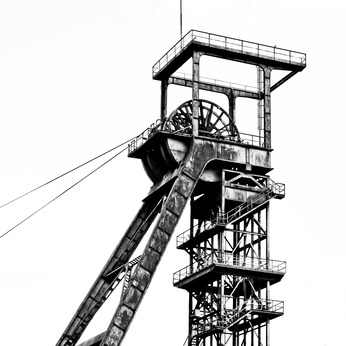For a long time, hemp ropes and iron chains were the tools used in mining to lift ore to the surface. But accidents were a frequent occurrence, because the chains broke and ropes tore. Until the 19th century, when Wilhelm August Julius Albert, a senior mining councilor in the Harz region, had an idea: together with colliery blacksmith Heinrich August Mummenthey, he succeeded in producing a wire rope out of iron consisting of three strands of four wires each. It had six times the lifting capacity of a hemp rope and four times that of a chain rope. What’s more, it was much lighter than chain rope. Albert successfully put his invention into action in the summer of 1834 in the Caroline mine in Clausthal.
Successful tightrope act
Wilhelm August Julius Albert originally came from Hanover and studied law at the University of Göttingen. In 1806, during a visit to the Upper Harz region, he discovered an interest in mining – and changed industries without further ado. He got a job as an auditor at the mining and forestry offices of Clausthal and Zellerfeld. After holding other offices, he was awarded the title of mining councilor (“Bergrat”) in 1817. This title was created especially for him, since he could not become a senior mining official (“Berghauptmann”) because of his middle-class background. He was appointed senior mining councilor (“Oberbergrat”) in 1825.
Various sources quote the colliery blacksmith Mummenthey, with whom Albert developed the wire rope, emphasizing Albert’s work ethic and well- structured working day: Albert got up at 4am. After a half hour lunch break, he rode through the different mining districts, then he worked until 10pm. And he liked to “eat heartily” – his favorite meal being beans with bacon and warm buckwheat cakes. That was then. And what has become of his invention, the wire rope, today? It revolutionized mining – and is used in many other industries around the world.
(Header image: Quality Stock Arts – AdobeStock.com, in the article: reeel – Fotolia.com)









